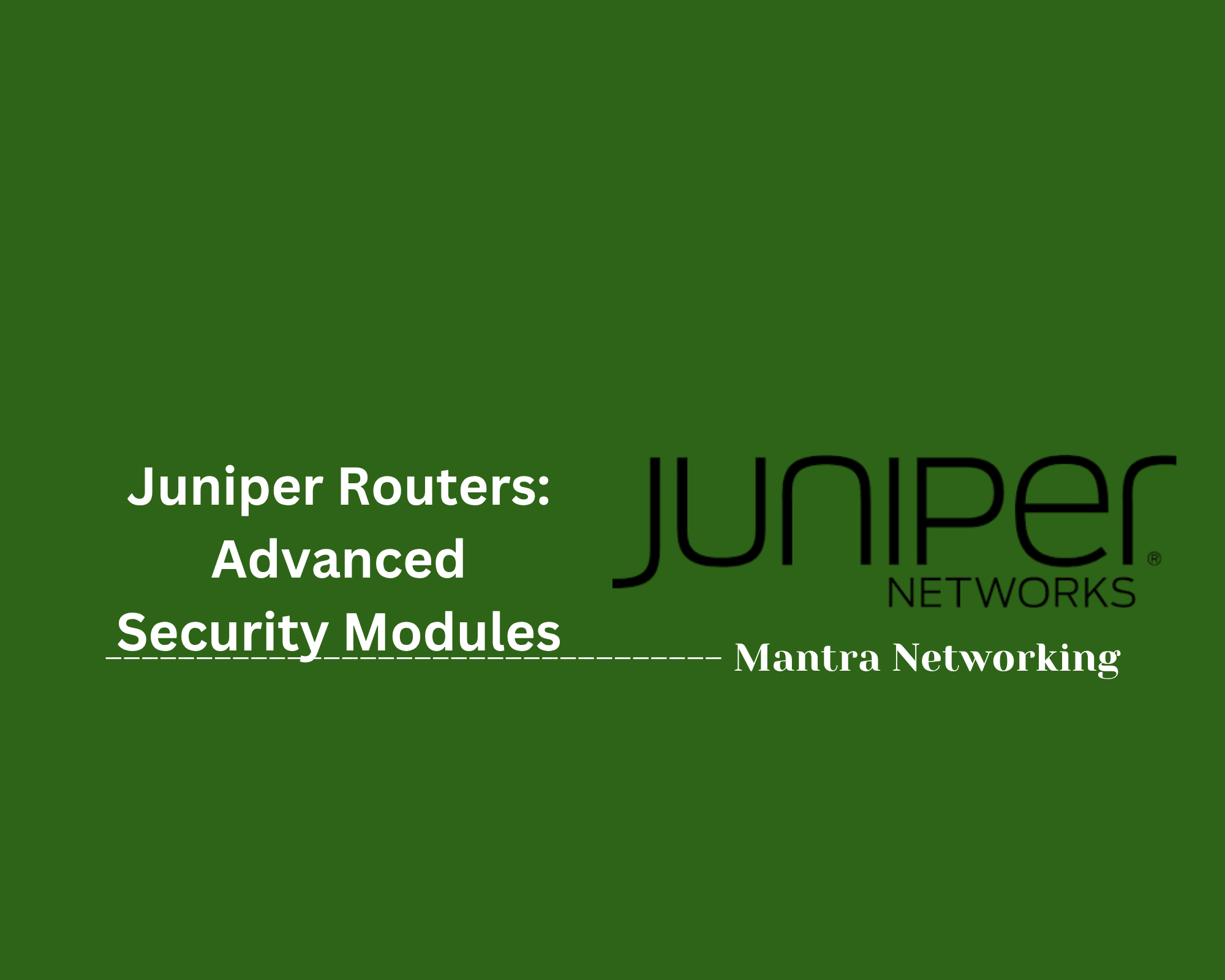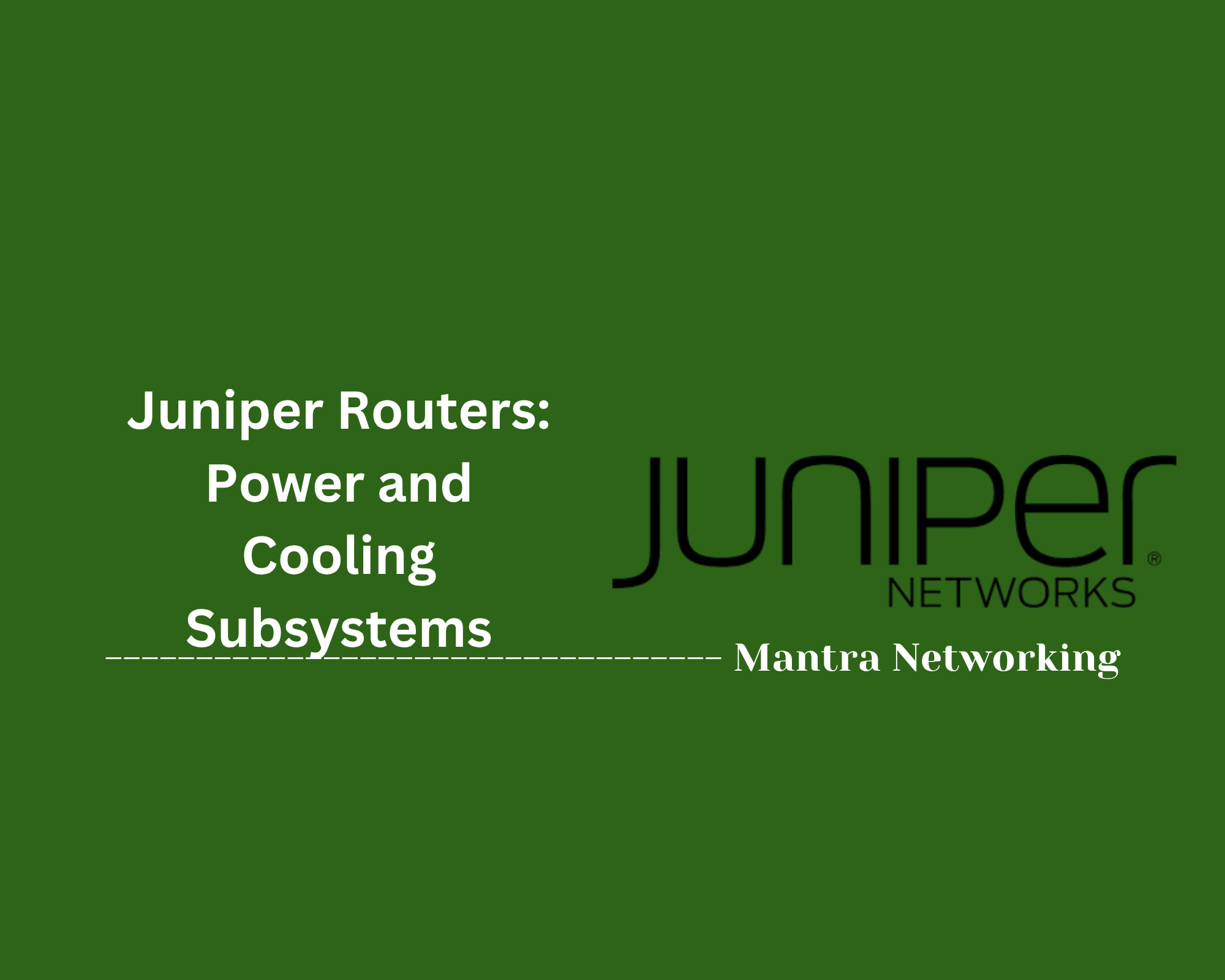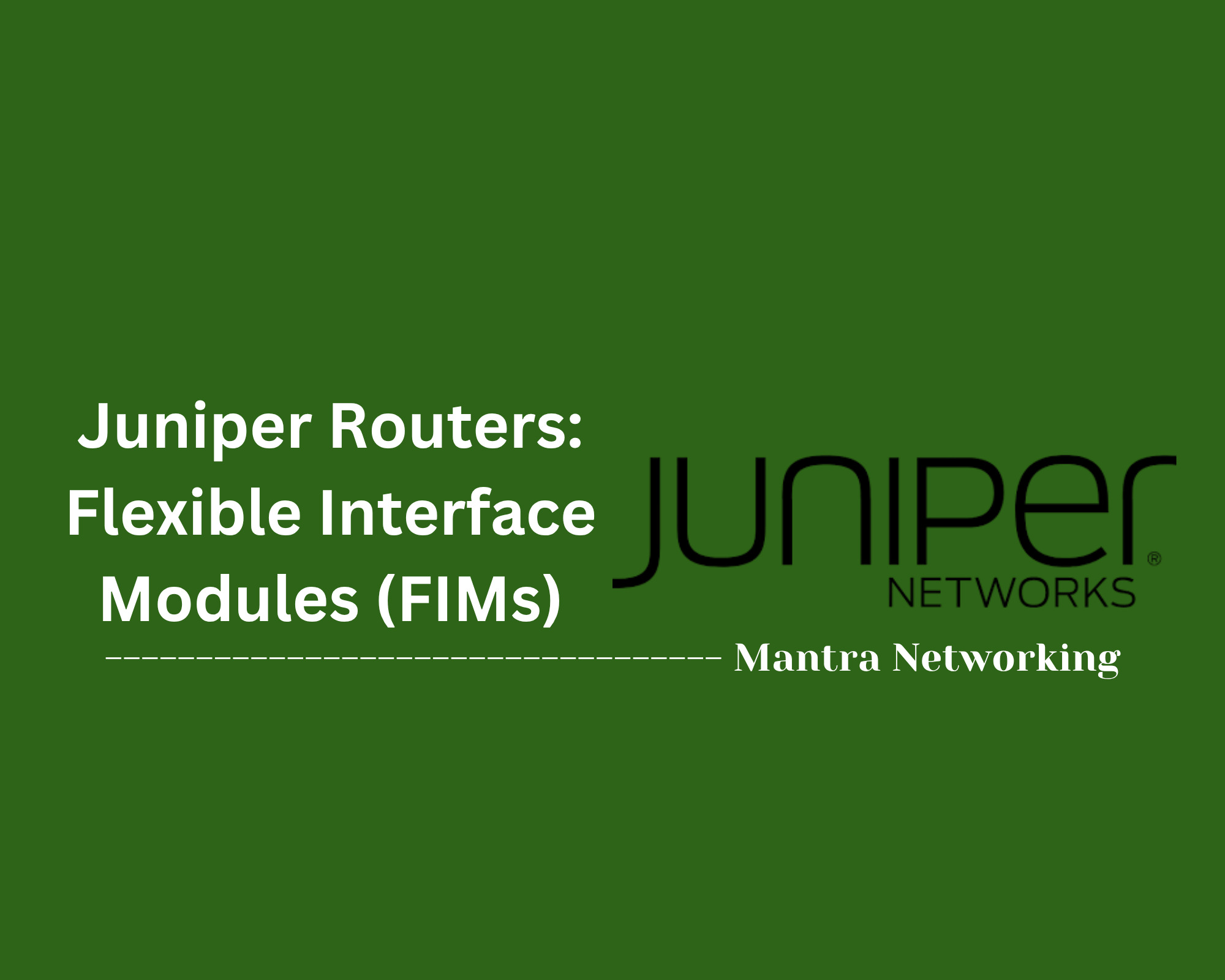Table of Contents
- Overview
- Key Functions of the Management Plane
- Management Interfaces
- Best Practices for Management Plane Security
- Advantages of Management Plane Separation
- Typical Traffic on the Management Plane
- Juniper Architecture Note
- Conclusion
Juniper Switches: Management Plane - Overview
What is the Management Plane?
The management plane in Juniper switches represents a critical component of the network device architecture that handles all administrative and operational management functions. Unlike the data plane (which forwards transit traffic) and the control plane (which handles routing protocols and system processes), the management plane is specifically dedicated to providing secure, reliable access for network administrators to configure, monitor, and maintain the device12.
In Juniper's architectural design, the management plane is technically considered a subset of the control plane, but it serves such a distinct and vital role that it's often discussed as its own entity12. This plane encompasses all the services and interfaces that enable remote and local administration of the switch, including SSH access, web-based management, SNMP monitoring, and system logging.
The management plane operates through dedicated interfaces that are physically and logically separated from the production network traffic. The most common management interface on Juniper switches is fxp0, which provides out-of-band management capabilities3. Other platforms may use interfaces like em0, me0, or re0:mgmt-* depending on the specific device model and Junos version3.
Why You Need to Know About the Management Plane
Understanding the management plane is essential for several critical reasons:
Security and Network Integrity
The management plane represents one of the most sensitive attack surfaces in your network infrastructure. Proper configuration and security of management interfaces can mean the difference between a secure network and one vulnerable to unauthorized access4. Since management traffic carries administrative credentials and configuration data, compromising the management plane can lead to complete network takeover.
Operational Reliability
A well-designed management plane ensures that you can maintain administrative access to your switches even when the data plane experiences failures or congestion12. This separation is crucial for troubleshooting network issues, as it provides an independent channel for accessing the device when primary network paths are unavailable.
Compliance and Auditing
Many regulatory frameworks require proper separation of management traffic from production traffic, along with comprehensive logging and monitoring of administrative activities4. Understanding how to properly configure and secure the management plane is essential for meeting these compliance requirements.
Performance Optimization
Management plane traffic can impact overall device performance if not properly isolated and controlled. Heavy management traffic (such as bulk SNMP polling or file transfers) can consume CPU resources that should be dedicated to forwarding decisions2.
How the Management Plane Works
Architectural Foundation
Juniper switches implement a three-plane architecture that provides clear separation between different types of network functions12:
- Data Plane: Handles transit traffic forwarding using specialized hardware (ASICs)
- Control Plane: Manages routing protocols, system processes, and device control
- Management Plane: Provides administrative access and device management capabilities
The Routing Engine (RE) serves as the central processing unit for both control and management plane operations5. It runs the Junos operating system and handles all administrative functions while maintaining separation from the Packet Forwarding Engine (PFE) that handles data plane operations5.
Management Interface Operation
Management interfaces like fxp0 operate independently of the switch's main forwarding interfaces3. These interfaces:
- Connect to dedicated management networks (out-of-band management)
- Provide secure access channels that don't interfere with production traffic
- Support various management protocols including SSH, HTTPS, SNMP, and NTP
- Enable remote configuration and monitoring capabilities
Traffic Flow and Processing
Management plane traffic follows a distinct path through the device:
- Ingress: Management traffic enters through dedicated management interfaces
- Processing: The Routing Engine processes management requests using the device's CPU
- Response: Administrative responses are sent back through the same management interfaces
- Isolation: Management traffic never mixes with production data flows
Key Management Services
The management plane supports several essential services:
- SSH/CLI Access: Secure command-line interface for configuration and troubleshooting
- Web Management: HTTPS-based graphical user interface (J-Web)
- SNMP: Network monitoring and management protocol support
- AAA Integration: Authentication, Authorization, and Accounting with external systems
- System Logging: Centralized logging and event management
- File Transfer: Secure transfer of configuration files and software images
Security Framework
The management plane implements multiple security layers:
- Physical Separation: Dedicated management interfaces isolated from data traffic
- Access Control: Role-based authentication and authorization
- Encryption: Secure protocols for all management communications
- Monitoring: Comprehensive logging and audit trails
- Rate Limiting: Protection against denial-of-service attacks
This architectural approach ensures that network administrators can effectively manage Juniper switches while maintaining the highest levels of security, reliability, and performance. The management plane's design philosophy prioritizes operational continuity – ensuring that administrative access remains available even during network disruptions or high-traffic conditions.
Understanding these fundamentals provides the foundation for implementing robust network management practices and maintaining secure, efficient network operations in enterprise environments.
Key Functions of the Management Plane
The management plane in Juniper switches is responsible for all administrative and management activities that enable effective control over the device. These critical functions include:
- Device Configuration and Monitoring: Provides interfaces for configuring switch settings and monitoring system status via CLI, Web UI, SNMP, and other protocols.
- Administrative Access Services: Supports secure remote access protocols such as SSH and HTTPS, enabling administrators to manage the switch safely from anywhere.
- Network Time Synchronization (NTP): Helps maintain accurate device time, which is essential for logging, audits, and coordinated network operations.
- Authentication, Authorization, and Accounting (AAA): Integrates with centralized AAA servers (like TACACS+ or RADIUS) to control and log administrative access and permissions.
- Segregation of Management Traffic: Ensures all management communications are isolated from data and control planes, enhancing security and preventing interference.
Management Interfaces
Juniper switches provide dedicated management interfaces that are essential for secure and effective administrative access. These interfaces are separated from data and control planes to facilitate reliable configuration and monitoring.
- fxp0 – Dedicated Out-of-Band Management: A physical Ethernet interface solely for device management. It operates independently of data traffic, allowing administrators secure access to the switch even when the main network is unavailable.
- em0, em1 – Ethernet Management Interfaces: Depending on the switch model, these interfaces may provide additional out-of-band management or redundancy, ensuring robust accessibility for administrative tasks.
- Console Port: A serial connection used for initial setup, recovery, or direct local management when remote access is unavailable.
- In-Band Management: Offers management access over the production network via VLAN or specific IP, generally used as a backup when out-of-band methods are not available. Security best practices recommend limiting this to reduce risk.
It is recommended to use out-of-band management interfaces (such as fxp0) for critical administrative operations to enhance security and operational resilience.
Best Practices for Management Plane Security
To ensure resilient and secure operations, it is crucial to follow these best practices when managing the management plane on Juniper switches:
-
Isolate Management Traffic:
Use dedicated out-of-band management interfaces (such as
fxp0) to separate management communications from regular network traffic. This limits the attack surface and prevents interference from production data flows. - Restrict Access with Firewall Filters: Apply firewall filters to only permit management traffic from authorized networks or hosts. Deny all unnecessary protocols and restrict access to trusted administrative IP ranges.
- Implement AAA (Authentication, Authorization, and Accounting): Integrate centralized AAA systems—like TACACS+ or RADIUS—to control admin access and log all actions for auditing and compliance.
- Enable Secure Remote Access Protocols: Only allow encrypted protocols (such as SSH and HTTPS) for remote administration. Disable insecure protocols like Telnet and FTP.
- Apply Control Plane Protection (CoPP) and DDoS Policies: Enforce rate limiting and DDoS protection to safeguard the routing engine and management CPU from excessive or malicious traffic.
- Limit Protocol Exposure: Enable only necessary management services (for example, SNMP, NTP) and disable unused features or interfaces to reduce vulnerabilities.
- Audit, Monitor, and Log Activity: Continuously monitor access logs and failed login attempts. Regularly review logs for signs of unauthorized activity or intrusion attempts.
- Patch and Update Regularly: Apply Junos OS updates and security patches in a timely manner to mitigate newly discovered vulnerabilities.
By implementing these best practices, organizations can significantly enhance the security and reliability of their Juniper management plane, ensuring only authorized personnel have administrative access and minimizing risk from attacks or misconfigurations.
Advantages of Management Plane Separation
Separating the management plane from data and control planes in Juniper switches provides significant operational and security benefits that enhance overall network reliability and administrative control:
- Enhanced Security Posture: Isolates management traffic from production data flows, reducing the attack surface and preventing unauthorized access to administrative functions through data plane vulnerabilities[1][21].
- Improved Network Reliability: Ensures management access remains available even when data plane experiences failures or congestion, allowing administrators to troubleshoot and resolve issues without losing control of the device[24][26].
- Operational Resilience: Provides out-of-band management capabilities that enable remote administration during network outages, significantly reducing downtime and the need for physical site visits[22][24].
- Performance Optimization: Prevents high-bandwidth data traffic from interfering with management operations, ensuring consistent response times for administrative tasks and monitoring functions[12][36].
- Fault Isolation and Containment: Creates clear boundaries between network planes, ensuring that problems in one plane do not cascade to affect management capabilities or overall system stability[1][12].
- Simplified Policy Management: Allows for independent security policies and access controls to be applied to management traffic, enabling more granular control over administrative access and compliance requirements[21][28].
These advantages make management plane separation a critical design principle for enterprise networks requiring high availability, security, and operational efficiency.
Typical Traffic on the Management Plane
The management plane in Juniper switches handles various essential services that facilitate administrative control, monitoring, and device synchronization. The key types of traffic include:
- SSH/HTTPS: Secure remote command-line and graphical user interface access allowing administrators to manage the device securely from any location with proper permissions.
- SNMP: Used for network monitoring, inventory management, and device status reporting, SNMP enables centralized oversight of network devices and performance metrics.
- NTP (Network Time Protocol): Ensures accurate synchronization of the device's system time, which is critical for consistent logging, troubleshooting, and security auditing.
- AAA (Authentication, Authorization, and Accounting): Handles the secure management of user access, permissions, and activity logging through integration with systems like TACACS+ or RADIUS.
- Loopback and Management VLANS: Often used for in-band management over the production network, these VLANs enable management traffic to traverse the main network securely if out-of-band access is unavailable.
Understanding these types of traffic is vital for designing secure and efficient management strategies in Juniper network environments.
Juniper Architecture Note
Juniper's network architecture is built around a three-plane design that ensures optimal performance, security, and management capabilities. Understanding how the management plane fits into this architecture is crucial for effective network operations:
- Three-Plane Architecture Foundation: Juniper switches implement a distinct separation between the management plane, control plane, and data plane, with each plane serving specific functions while maintaining clear boundaries for enhanced security and performance[1][6].
- Management Plane as Control Plane Subset: The management plane is architecturally considered a subset of the control plane, handling all administrative and exception traffic that requires system-level attention rather than standard packet forwarding[14][17].
- Routing Engine (RE) as Central Hub: The Routing Engine serves as the "brain" of the device, managing both control and management plane functions while maintaining routing tables, forwarding tables, and providing administrative access via CLI and J-Web interfaces[5][11].
- Physical Separation Benefits: The RE and Packet Forwarding Engine (PFE) operate on separate hardware, ensuring that management operations remain available even during data plane failures or high-traffic conditions[7][8].
- Dedicated Internal Communication: The RE and PFE communicate through high-priority internal links that carry forwarding table updates and control information, maintaining synchronization without impacting transit traffic performance[9][12].
- Management Plane Independence: This architectural separation allows management functions to operate independently from production traffic, providing reliable out-of-band access for troubleshooting and configuration changes[2][10].
This architectural design ensures that administrative functions remain robust and accessible while maintaining the high-performance packet forwarding capabilities that Juniper switches are known for.
Conclusion
Throughout this comprehensive exploration of Juniper Switches' Management Plane, we've covered the essential elements that make effective network administration both secure and efficient. Let's recap the key insights that will help you optimize your network management strategy.
Key Takeaways
Architecture Matters: The three-plane separation in Juniper switches isn't just a design choice—it's a fundamental security and operational advantage. By keeping management traffic isolated from data and control planes, you ensure that administrative access remains available even during network disruptions, while simultaneously reducing your attack surface.
Security is Non-Negotiable: The best practices we discussed aren't suggestions—they're necessities in today's threat landscape. From implementing robust AAA systems to using out-of-band management interfaces like fxp0, these security measures protect your network infrastructure from both external threats and internal misconfigurations.
Proper Interface Selection: Understanding the difference between fxp0, em0/em1, and in-band management options empowers you to make informed decisions about how to structure your management access. Remember, out-of-band management isn't just more secure—it's often your lifeline when troubleshooting network issues.
Traffic Awareness: Knowing what types of traffic flow across your management plane—from SSH and HTTPS to SNMP and NTP—enables better monitoring, security policy creation, and troubleshooting. Each protocol serves a specific purpose, and understanding these purposes helps you optimize your management infrastructure.
Operational Excellence: The advantages of management plane separation extend beyond security. Improved reliability, performance optimization, and fault isolation all contribute to a more resilient network that can withstand both planned maintenance and unexpected failures.
Moving Forward
Implementing these management plane principles isn't just about following best practices—it's about building a foundation for scalable, secure, and maintainable network operations. Whether you're managing a small enterprise network or a large-scale data center deployment, these concepts will serve you well.
Remember that network management is an ongoing process, not a one-time setup. Regular audits, continuous monitoring, and staying current with Junos OS updates will ensure your management plane remains both secure and effective.
Thank you for joining us on this deep dive into Juniper's management plane architecture. We hope this guide serves as a valuable reference as you design, implement, and maintain your network infrastructure. Here's to building networks that are not just functional, but resilient, secure, and ready for whatever challenges lie ahead!
Happy networking! 🚀



